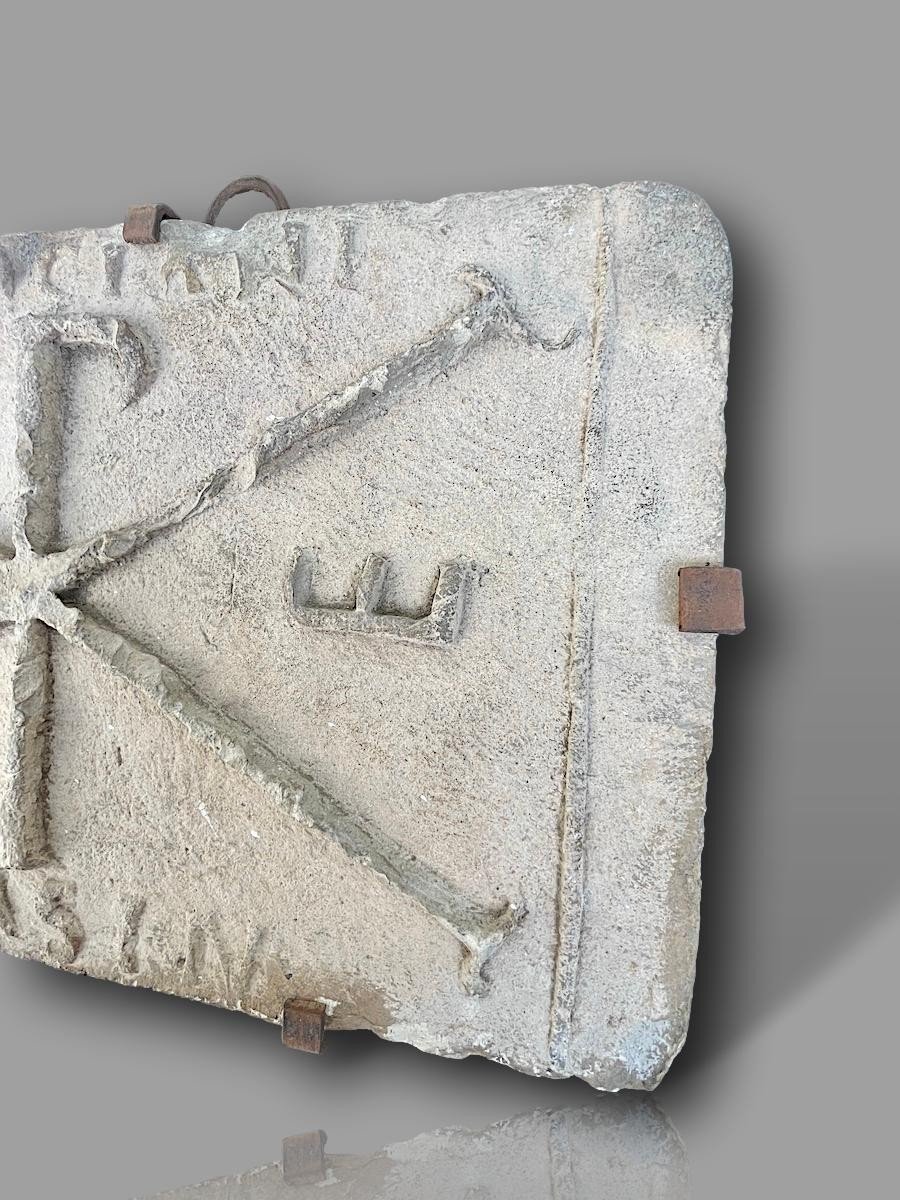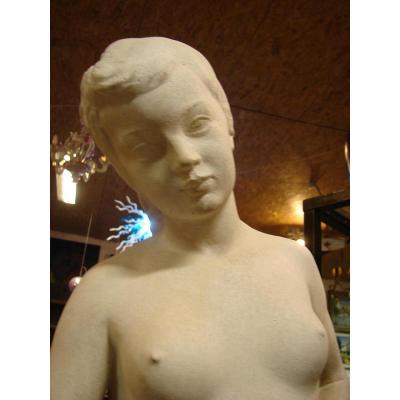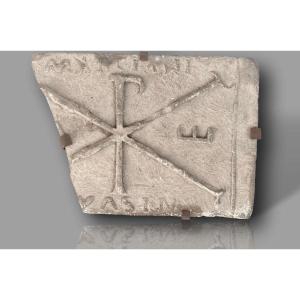Extremely rare fragment of Chrism in sculpted stone,
Dating from the 8th century,
Visigothic period Coming from a private collection
Dimensions 41 x 29 x 4.5 cm Weight: 8.9 kg
Presence of a frame to hang it
Very careful shipping
The Chrism Christian symbol which can turn into a sign and object of a magical nature. It has a sacred value. In its six-pointed form, it is used in popular magic as a PROTECTIVE SYMBOL, it is then called THE STAR OF LUCK. Hagalaz is then represented in the form of a ROSACE, or a flower with six petals, made from arcs included in a circle. This lucky star is visible on many ancient buildings which it magically protects. We find it on our chrisms. The chrism or “monogram of Christ” is a Christian symbol formed by the two Greek capital letters X (chi) and P (rho), the first being affixed to the second. These two letters are the first of the word Χριστός which means Christ. They are often accompanied by the first and second letters of the Greek alphabet α (alpha) and ω (omega). These frame the alphabet, thus symbolizing the whole, the beginning and the end. If these letters are added together, they form the word ἄρχω, which means "to lead, to lead, to command", and refers to Jesus Christ, "founder and first head of the emerging Christian Church". The sign of Chrism is generally inscribed in a circle, an image of unity and divine perfection. It is the symbol of the Christian religion but also a symbol of protection. Chrism is often represented by a six-pointed star and refers to the Star which guided the Three Wise Men to the Child Jesus. We often find Chrism on the walls of Christian religious buildings such as churches, chapels, basilicas, certain mortuary buildings, etc. This symbol also appears on many mosaics, various objects and jewelry. The Roman Emperor Constantine I is considered the first Christian emperor. Legend has it that in 312, during the battle of Pontus Milvius which opposed him to Maxentius, Constantine I saw Chrism appear in a dream, accompanied by this message "by this sign you will conquer" ("In hoc signo vinces" in Latin). It was with this sign as his standard that he won the battle. Chrism thus became the symbol of Christianity and was then used as an emblem by the Roman emperors who succeeded Constantine. However, this legend remains contested and the Emperor Constantine would only have converted with certainty once on his deathbed. It seems that Chrism existed well before but was adopted by the emperor at a time when Christianity was still in the minority. Constantine's victory would then have made it possible to show his favor towards Christianity and to impose the supremacy of the Christian religion. Among the pagan Greeks, Chrism (“chrêstos”) simply meant “useful, auspicious”. It then referred to a wish or an approving comment.






















 Le Magazine de PROANTIC
Le Magazine de PROANTIC TRÉSORS Magazine
TRÉSORS Magazine Rivista Artiquariato
Rivista Artiquariato
